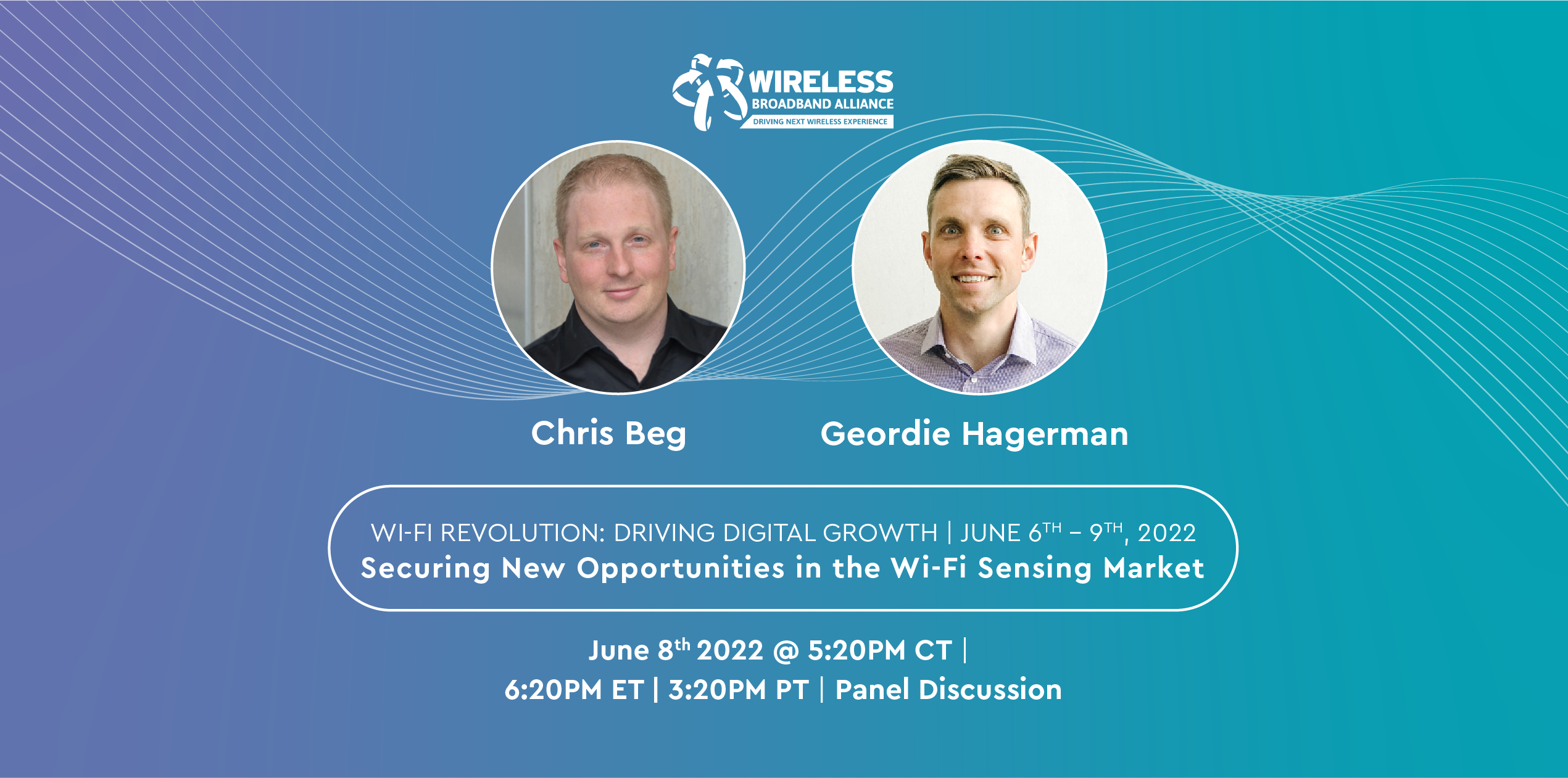In the first week of June, at the Wireless Broadband Alliance’s Wireless Global Congress in Chicago, we connected with some of the greatest minds in Wi-Fi. Not only were we thrilled to hear directly from the biggest movers in our industry, but we also had the opportunity to lead a panel discussion with Cable Labs’ Josh Redmore about driving digital growth with the Wi-Fi revolution and securing new opportunities in the Wi-Fi Sensing market. Joining Josh, Christopher Beg, our Senior Wireless Systems Architect (Radio Standards), served as an expert on his involvement with the WBA in their sensing groups, standardization efforts, and whitepaper publication. Geordie Hagerman, our EVP Commercialization, answered key questions about Wi-Fi Sensing, Cognitive’s WiFi Motion solution, and possible future applications of the technology.
To kick things off, the panel explained Wi-Fi Sensing, describing it as a fusion of two technologies: Wi-Fi for connectivity and radar for sensing purposes. The technology operates based on channel state information (CSI). To help explain this concept, Chris Beg compared it to the mechanics of an echo when standing in a cave. As you speak, you hear echoes of the soundwaves reflecting off of the surfaces in the cave and coming back. If someone else is standing in the cave with you, they’ll also hear the soundwaves of your voice, but it’ll be harder to hear over the echo. The same principle applies to Wi-Fi signals. As Wi-Fi signals bounce around a space, they reflect off of surfaces or people, creating an “echo” at the receiver. For Wi-Fi Sensing, we want this reflection to happen quite quickly but, like in the cave example, this creates a lot of congestion. CSI helps build a model of the environment which allows the receiver to remove the chatter, so you instead get a clean transmission. That is usually where CSI’s role ends. Wi-Fi Sensing further leverages CSI to extract information, analyze it, and understand the environment around the receiver.
The discussion also focused on how the Wi-Fi industry can grow and expand into new applications beyond just home security or eldercare, such as smart home, enterprise, or hospitality. Without the standardization of the technology, Wi-Fi Sensing advances are more difficult to widely integrate. By creating pre-defined protocols and standards for both the hardware (i.e., chip) and software, standardization will help refine Wi-Fi Sensing for future applications such as breathing detection or heart rate monitoring. The WBA’s Sensing work group helped put momentum behind initiating the IEEE 802.11bf standard work, which is helping Wi-Fi Sensing become more vendor-inclusive and efficient, ultimately paving the way for the technology to operate on user devices instead of other gateways. Wi-Fi Sensing is particularly attractive to internet service providers (ISPs) because the technology is sticky. It is a software solution (versus hardware-based), updatable over the air, and encourages positive brand engagement through a provider’s app.
Finally, the panel ended with a call to action for industry leaders to get involved in standardization efforts. As Chris said, we believe that Wi-Fi Sensing will become standardized by 2024, meaning motion capabilities in nearly every router or gateway. As the standards for home and work environments evolve to become smarter, data and motion intelligence will be absolutely crucial in supporting innovative and new ways to understand spaces. Cognitive is actively working to invent the dictionary needed to help troubleshoot Wi-Fi Sensing. It is absolutely crucial to be part of this definition phase and help build out the base-level technology that will enable a number of other potential applications. Companies and individuals that get involved now become shaping influences and have unprecedented access to setting standards and the data behind Wi-Fi Sensing, which is one of its most powerful tools. To get there, however, collaboration is key.

